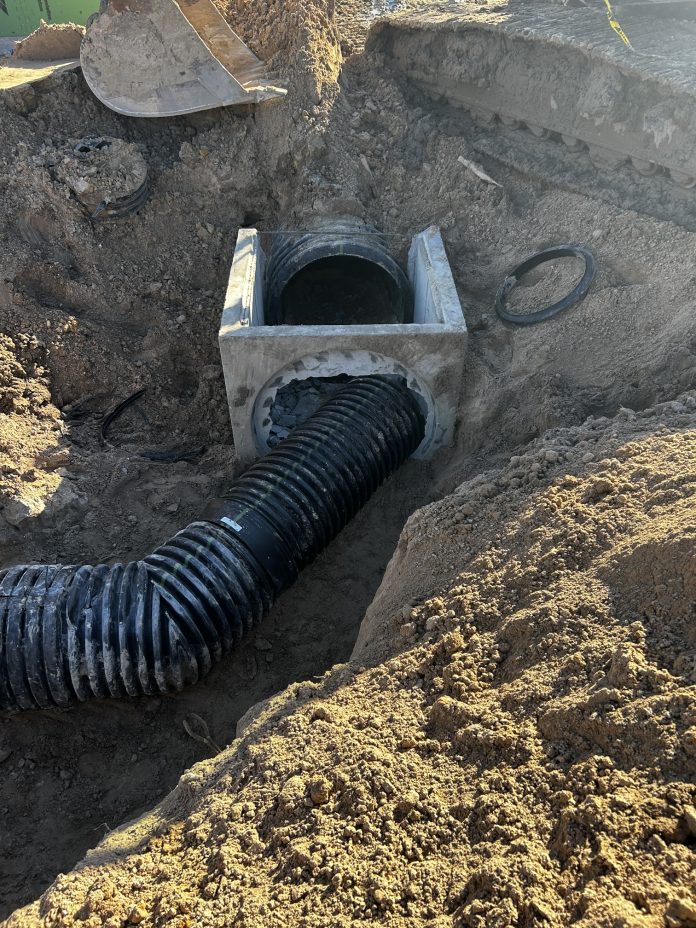Storm Drains
When rainwater travels over roads and enters a storm drain, it is typically directed straight to the closest stream, river, or bay. This water rarely goes to a treatment plant. Most storm drains simply gather rainwater and direct it away to avoid flooding, while also transporting contaminated runoff to local water sources.
What is Storm Water?
Stormwater refers to any precipitation that flows off surfaces like roofs, sidewalks, parking lots, or streets where it cannot soak in. As urban areas grow and more roads, parking lots, and buildings are built, managing how this runoff moves through the environment becomes increasingly important and difficult. If the water stays on the surface, it can cause damage or weaken the structure of buildings and other man-made surfaces. Therefore, systems have been created to handle stormwater during rain and snowfall.
What is a Storm Water System
Managing stormwater runoff is a complex system that many people overlook in their everyday lives. It exists in our neighborhoods to direct rainfall and other gathered water to collection basins and away from homes. Often, small remote-operated vehicles, like the Deep Trekker DTG3, are used to inspect these systems. This transportation of water is crucial primarily to prevent flooding.
For a brief moment, let’s consider the basics of the water cycle:
Storm Water Management
Several precautionary steps, in addition to the drainage system, are taken to keep stormwater separate from our drinking water sources, particularly in areas where cities and roads are right next to reservoirs. Here are some other features in our cities that may surprise you as storm water management tools:
Minimizing Directly Connected Impervious Areas
City planners aim to create grassy spaces between roads and water sources. Grass lawns or other permeable surfaces help naturally filter some pollutants through the soil before the water reaches the aquifer.
Concrete Grid Pavement
Gaps in the pavement allow stormwater to seep through to permeable materials, where it can be naturally filtered.
Grassed Swales
Shallow, vegetated channels positioned next to roads that slow down and decrease the amount of runoff. Filtering can happen, but the swales need to be shallow enough so they don’t gather water to become small basins themselves.
Buffer Strips
These consist of trees, shrubs, and grasses planted alongside a stream. The strips should feature three zones: four to five rows of trees, two rows of shrubs, and finally, a grassy area measuring 20 to 24 feet wide. This setup slows down the runoff and removes a significant amount of solids before they reach drinking water.
Filter Strips
Gently sloping vegetated regions surrounding a body of water. They stabilize the soil while also filtering stormwater before it enters the aquatic environment.
Storm Water Ponds or Wetlands
Permanent water collection areas where sediments settle during periods between storms are established to gather rainwater. Efforts to manage stormwater in the nearby regions channel into these ponds. Often, these ponds serve as decorative elements in neighborhoods or parks. If adequately maintained, meaning sediment is taken out every seven to ten years, the environmental impact remains low.
Infiltration Techniques
These are long, narrow trenches filled with stones. They are deeper than grassy swales, ranging from three to twelve feet, and hold excess water between the stones, gradually allowing it to seep into the ground. When paired with other initial treatment methods like swales, this approach can remove as much as 98% of pollutants.
Swirl Concentrators
These are underground chambers designed to create a rotating motion, enabling the removal of sediment, oil, and grease. The swirling water quickly separates heavier particles and lighter debris.
Leaving runoff unmanaged can result in serious consequences. To keep the water cycle in balance in the long run, it is essential to check every component of the stormwater management system. Deep Trekker ROVs are utilized for examining these systems. If your system is due for a checkup, reach out to us to learn how we can assist you.


